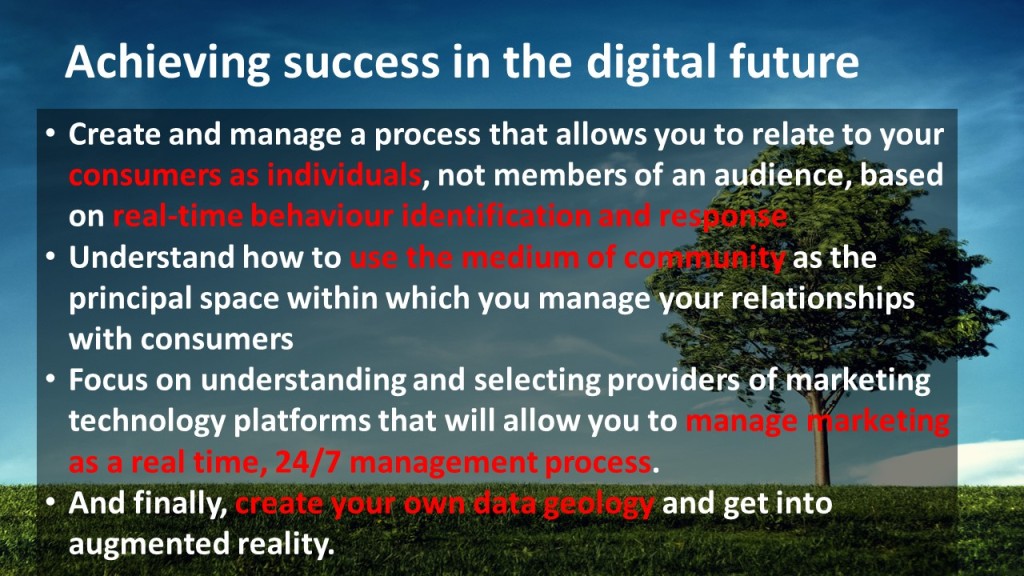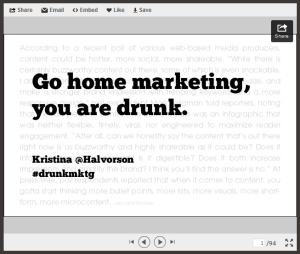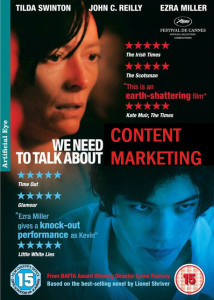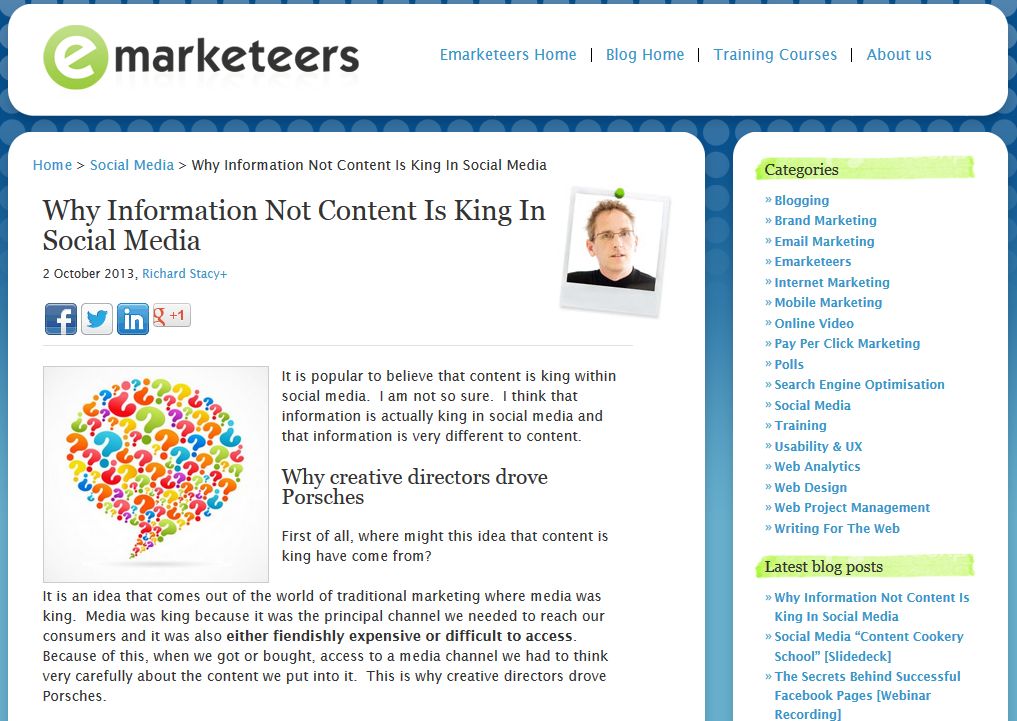A focus for marketing in 2017
I notice that I last posted in June last year and that this wasn’t even a proper post, just a reference to a speech I had given in Istanbul that was conveniently YouTubed. In my defence, I have been busy doing other things such as building a house and involved in an interesting experiment in online education. Interestingly, my blog views haven’t decreased dramatically over that time, which I think says something instuctive about the whole content thing. It suggests that content is not a volume game, where frequency or even timing of posting is key, rather it suggests that content is a relevance game that is not driven by the act of publication, but driven by the act of search. This is why content socialisation is far more important that content publication. As I have said before, spend only 10 per cent (or less) of your content budget actually producing content and the remaining 90 per cent on socialising that content. Socialised content is the gift that carries on giving. Once it is out there it will carry on working for you without you having to do anything else. And this socialisation has to start with an understanding of what content (information) people actually want from you – identifying the questions for which your brand is the answer. Remember, the social digital space is not a distribution space where reach and frequency are the objectives, it is a connection space where the objectives are defined by behaviour identification and response.
Here endeth the predictable critique of content strategies.
Given that it is still January I believe I have permission to resume posting with a 2017 prediction piece. I was prompted to do this by reading Ashley Freidlin’s extremely comprehensive post on marketing and digital trends for 2017. This is essentially a review of the landscape and it its sheer scale is almost guaranteed to strike terror into the heart of every marketing director. Perhaps because of this, Ashley’s starts with saying that the guiding star for 2017 should be focus, so in that spirit I shall attempt to provide some basis for focus. Continue reading

 A few weeks ago I was in Istanbul speaking at the Digital Age Summit. A video of my presentation is now on YouTube and I have finally got around to posting it.
A few weeks ago I was in Istanbul speaking at the Digital Age Summit. A video of my presentation is now on YouTube and I have finally got around to posting it.


 Scale is a very important concept in social media and I think there are three reasons for this.
Scale is a very important concept in social media and I think there are three reasons for this.
